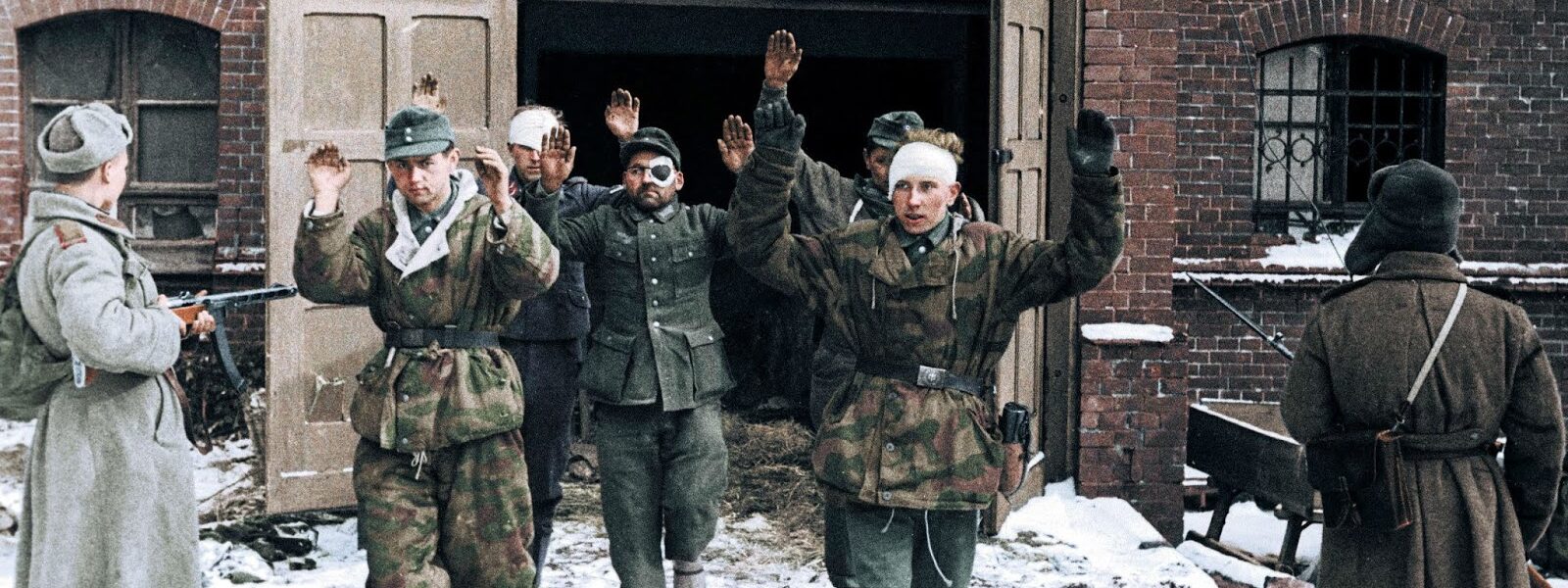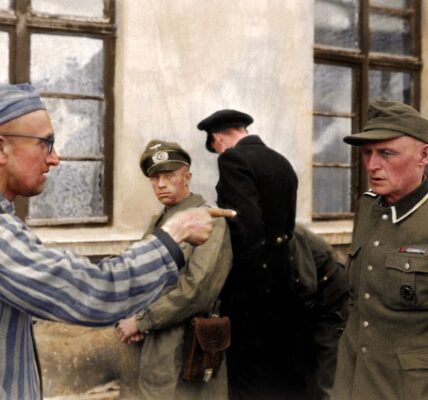 |
| Soviet Red Army overruns the West in 1945 |
 |
| East Prussian refugees flee from the advancing Red Army |
 |
| German refugees from East Prussia move west |
 |
| Luftwaffe and army soldiers take prisoners in East Prussia |
The massive Soviet strategic offensive in Eastern Pomerania took place from February 10 to April 4, 1945, in Eastern Pomerania and the Danzig-West Prussia region, before the offensive on Berlin could resume. The need to secure the flanks of the main thrust delayed the final Soviet drive towards Berlin, originally planned for February 1945, until April 1945. The Soviets faced the Germans with an extremely impressive array of forces. The 2nd and 3rd Belorussian Fronts in the north, with 12 armies, faced the three armies of Army Group Center. On the 1st Belorussian and 1st Ukrainian Fronts, the Soviets had 2,200,000 troops, 6,400 tanks and self-propelled assault guns, and 46,000 indirect-fire weapons. Army Group A was able to field 400,000 troops, 1,150 tanks, and 4,100 indirect fire weapons on these two fronts. However, the Soviet forces suffered heavy losses on their westward advance. Their greatest obstacle was the renewed fury of the German soldiers, now fighting to defend their own homeland. Tens of thousands of German soldiers were sacrificed trying to hold positions of little tactical or strategic importance.
The Wehrmacht was driven westward by the relentless tide of the Soviet offensive. Along with the German army, masses of refugees fled in panic from the Soviet Red Army, knowing full well that the Soviets were raping and crucifying women and young girls as they advanced westward. Eastern European women were not spared either. Nazi propaganda—originally intended to galvanize civilian resistance through the gory and embellished descriptions of Russian atrocities such as the Nemmersdorf and Metgethen massacres —often backfired and caused panic. Scores of residents of the German provinces of East Prussia, Silesia, and Pomerania died during the evacuations. A significant percentage of these deaths occurred when evacuation columns encountered Red Army units. Civilians were run over by tanks, shot, or otherwise murdered. In addition, fighter-bombers of the Soviet Red Air Force, whose presence in the skies was now unchallenged, flew bombing and strafing attacks on columns of refugees. Image credits: Military historian Ian Baxter and Wikipedia, among others. Top image: A Soviet T-34-85 tank crosses a cold river in Silesia during the 1945 Pomerania and Silesia offensives. USSR propaganda photo. Public domain. Middle images: German refugees from the East Prussian capital of Königsberg fled massacres in their homeland in February 1945. The West German Tracing Service reported that 31,940 civilians from East Prussia alone were killed during the evacuation. Photos by Vinzenz Engel. Source: Prussian Cultural Heritage Foundation. Fair use. Bottom image: German soldiers surrender to the Soviets in East Prussia in early 1945. Julius Backman Jääskeläinen. Photos from the Soviet Union.








